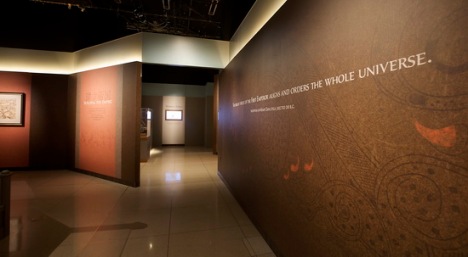You don’t have to travel the world to shoot images remarkable enough to sell. Gifted photographers can find visually powerful scenes without wandering far from their own backyards.
Just ask LexJet customer Jeff Rogers. He grew up in a tiny town (population 250) in rural Kentucky and has spent the past 20 years photographing Kentucky’s people, products, and culture for advertising, commercial, and corporate clients. His images have appeared in magazines such as National Geographic Traveler and Delta Sky magazine and on 30-ft. photo murals at the Lexington airport.
Last October, he released his second coffee-table book of panoramic images of Kentucky. The book is entitled Kentucky Wide II, and Rogers expects it to be a popular promotional tool or memento for the thousands of horse-lovers from around the world who will come to Kentucky this year for the 2010 World Equestrian Games. A number of Kentucky-based corporations bought the book for Christmas gifts. And some Kentucky residents bought copies to send to sons and daughters who have moved out-of-state.

Kentucky Wide II presents breathtaking panoramics that Lexington-based commercial photographer Jeff Rogers captured on 35 mm Fuji transparency film using a Hasselblad XPan camera. Each image in the book is printed at least 7 in. high and 20 in. wide, spreading across two pages of the 11.5 x 8 in. book. Rogers self-published his first photo book (Kentucky Wide) in 2006, and it sold out within months. Shown here: Cumberland Gap in the autumn. ©Jeff Rogers.
Self-publishing and marketing a photo book can be a lot of work, Rogers admits. But his photography business has benefitted in ways other than revenues from direct sales of the book. For example, because the book has sparked awareness of his archives of Kentucky-themed images, Rogers has sold many wall prints to upscale restaurants in Kentucky cities. (He prints these images himself, using LexJet Sunset Select Canvas or Sunset Textured Fine Art paper on his Epson Stylus Pro 9800.)
He has also seen an increase in his stock-photography sales. Most recently, Rogers learned tha this book has received three Addy Awards from the Lexington Advertising Club.
Kentucky Wide II is the second book Rogers has published. He published his first photo book in 2006, using 75 panoramic images that he had shot over a 10-year period while “getting lost” on the picturesque back roads that crisscross the farmlands, forests, and lake regions of Kentucky. The book sold out in a few months, so Rogers decided to produce a follow-up.
For Kentucky Wide II, Rogers took a different approach. He deliberately set out to shoot a cross-section of images that would more fully reflect the diversity and beauty of Kentucky in all four seasons. The 83 images in Kentucky Wide II not only include scenes of farms, forests, and skylines, but also show rock climbers at Red River Gorge in Eastern Kentucky, barrels in a bourbon warehouse on Kentucky’s Bourbon Trail, colorful jockey silks hanging in a locker room at Keeneland Race Track, grapes being harvested at the Lover’s Leap Winery, and cars being manufactured at the General Motors’ Corvette assembly plant in Western Kentucky.
Even though he shoots all of his commercial work digitally, Rogers shot 81 of the images for the Kentucky Wide II book on 35 mm Fuji transparency film. For the panoramic format, he used a Hasselblad XPan camera to expose approximately 1-3/4 frames per shot on the film. Jeff Whatley at National Geographic Imaging made 300MB drum scans of each image, and Richard Sisk made the meticulous color correction to meet the original film as closely as possible.
“It would have been easier, and certainly less expensive to digitally stitch these images together in Photoshop,” Rogers acknowledges. “But I chose to create them with a dedicated film camera because of the purity of the process.”
“I have always enjoyed the creative challenge of using different formats and perspectives.” adds Rogers. Not only does it give the viewer something different, but it also enables him to produce the types of images that most people can’t replicate.
He hired a photo editor to help him select which images to include, and a graphic designer to make the book look like more of an art book, than a travel book. And of course, he timed the book’s release for Christmas gift-giving and promotion of the 2010 World Equestrian Games.
The 176-page, hardcover book sells for $39.95 and is available at bookstores, online, and on his own website. Rogers is donating a portion of the proceeds from book sales to various charitable organizations, including a clean drinking water program in Bolivia, the Center for Women in Racing, Hospice of the Bluegrass, and the Lexington Rescue Mission.
To see more of Rogers’ work, visit his website www.jeffrogers.com

Rogers chose to shoot panoramics so viewers of Kentucky Wide II could experience Kentucky sights and scenes in a more natural, immersive way. Shown here: Flat Lick Falls in Jackson County. ©Jeff Rogers.
Filed under: Commercial/Advertising Photography, Photography Business, Uncategorized | Tagged: panorama photography, panoramics, photography books, Sunset Photo Papers, Sunset Select Canvas | Leave a comment »


















